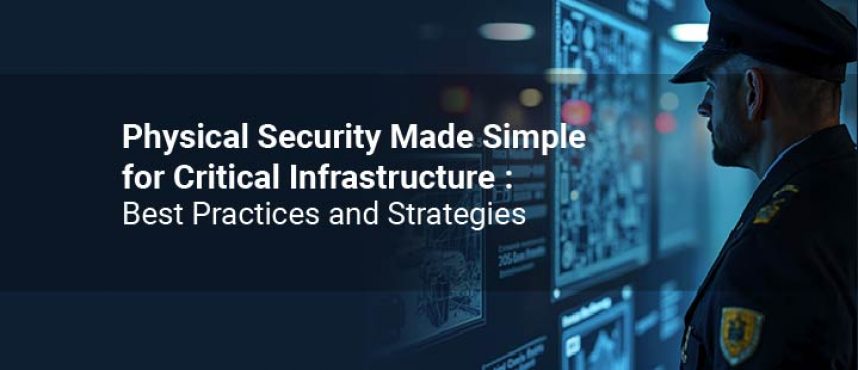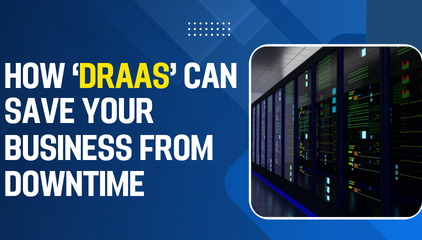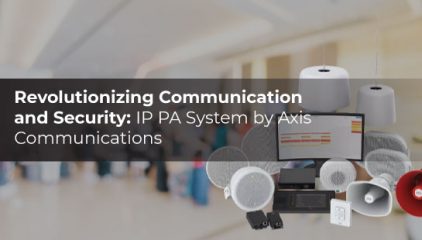Physical Security Made Simple for Critical Infrastructure
In today’s rapidly evolving digital landscape, protecting critical infrastructure is essential. From data centers and power grids to transportation networks, these assets are the backbone of modern society—and increasingly, they are targeted by sophisticated threats. Network Techlab, a leading provider in digital IT infrastructure services, emphasizes the importance of a well-planned physical security strategy. This blog outlines actionable best practices and strategies to help safeguard your operations.
Why Physical Security Matters for Critical Infrastructure?
Physical security is not just about preventing unauthorized access—it’s about ensuring the continuity of operations and protecting sensitive information. Whether you’re managing a data center or a power grid, a comprehensive security plan addresses current threats and adapts to emerging risks.
Physical security ensures:
- Asset Protection: Safeguarding hardware, servers, and sensitive equipment.
- Operational Continuity: Minimizing downtime caused by intrusions or disasters.
- Regulatory Compliance: Meeting standards like ISO 27001, NIST, or industry-specific mandates.
- Public Trust: Demonstrating commitment to reliability and safety.
Key Components of a Robust Physical Security Plan
1. Comprehensive Risk Assessment
Begin with a thorough risk assessment to identify vulnerabilities:
- Threat Identification: Evaluate risks such as unauthorized access, natural disasters, and cyber-physical attacks.
- Asset Prioritization: Determine which critical infrastructure assets need the highest level of protection.
- Impact Analysis: Understand how potential threats could disrupt operations and affect revenue.
A rigorous risk assessment is the foundation of a targeted security strategy.
2. Perimeter and Barrier Security
Establish a strong first line of defense:
- High-Security Fencing and Barriers: Invest in robust physical barriers to deter intrusions.
- Controlled Entry Points: Set up strategic checkpoints with advanced authentication systems.
- Surveillance Systems: Install visible and covert cameras to monitor the physical security of your perimeter continuously.
3. Advanced Access Control Systems
Limiting access to critical infrastructure is essential:
- Multi-Factor Authentication (MFA): Combine keycard systems with biometric scanners.
- Visitor Management: Use efficient visitor tracking to monitor and control access.
- Real-Time Monitoring: Integrate access control with a central system to swiftly respond to any anomalies.
4. Integrated Surveillance and Monitoring
Effective monitoring systems are the eyes of your physical security plan:
- High-Definition CCTV: Deploy cameras with advanced video analytics for real-time threat detection.
- Thermal Imaging: Use thermal cameras for enhanced night surveillance.
- AI-Powered Analytics: Leverage AI to flag unusual activities and expedite response times.
5. Intrusion Detection and Alarm Systems
Quick response to potential breaches is critical:
- Smart Sensors: Install sensors to detect unauthorized movements or breaches.
- Automated Alerts: Set up systems that notify security teams and local authorities immediately.
- Redundancy Protocols: Ensure backup systems are in place to maintain security during power or technical failures.
6. Emergency Response and Crisis Management
Preparation minimizes damage during incidents:
- Crisis Management Plan: Develop clear procedures for various emergencies.
- Regular Drills: Conduct periodic training to keep all staff prepared.
- Local Coordination: Work closely with local law enforcement and emergency services for a coordinated response.
7. Cyber-Physical Integration
Today’s threats span both digital and physical realms:
- Securing IT-Enabled Devices: Protect surveillance and access control systems with regular updates and network segmentation.
- Unified Security Operations Center (SOC): Integrate physical security data with cybersecurity monitoring for a comprehensive threat view.
- Continuous Improvement: Regularly update systems and protocols to keep pace with evolving risks.
Best Practices for Implementation
- Adopt a Layered Security Approach: Use multiple security measures to build redundancies that prevent a single point of failure.
- Invest in Emerging Technologies: Leverage AI, IoT, and real-time analytics to stay ahead of threats.
- Foster a Security-First Culture: Educate all employees on security protocols to create a proactive defense environment.
- Conduct Regular Audits: Periodically review and update your physical security strategy to address new vulnerabilities and compliance requirements.
For providers of digital IT infrastructure services, such as Network Techlab, a comprehensive physical security plan is critical—not only to protect assets but also to secure the future. By integrating robust access controls, advanced monitoring systems, and a proactive emergency response plan, organizations can safeguard their critical infrastructure against an array of evolving threats.
Are you ready to fortify your operations? Contact Network Techlab for tailored security solutions that ensure your physical security strategy remains a step ahead of emerging challenges.










